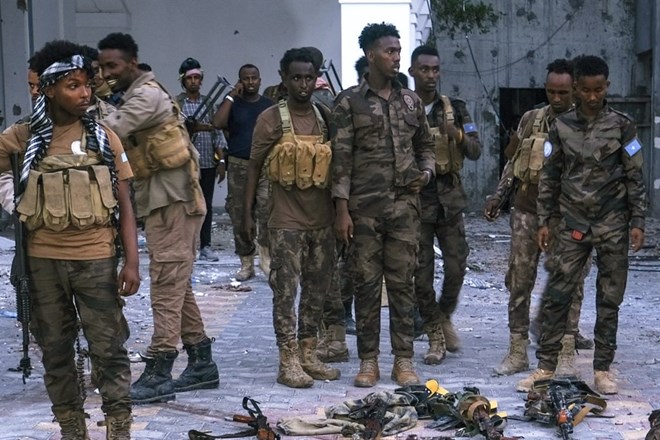After making significant progress, Somalia’s offensive against the Islamist Al-Shabaab group has stalled for months, raising concerns about the government’s capacity to crush the 16-year insurgency led by the Al-Qaeda-linked militants.
Here are the key questions surrounding the offensive:
Why are operations on pause?
The offensive was launched in August 2022, when the Somali government decided to wage “total war” against Al-Shabaab, joining hands with local clan militias.
For six months, the army and clan militias with air support from the African Union ATMIS forces, the United States and Turkish drones recaptured territory in central Somalia, notably seizing Islamist bastions in Adan Yabal and Harardhere.
But progress stalled as the militants exploited factors in their favour.
These included the death in combat of a major army commander, the arrival of new, inexperienced battalions and the reduced involvement of the clan militias.
President Hassan Sheikh Mohamud travelled to the front line to relaunch operations, telling Somalis on August 18 that his government would “eliminate” the jihadists by the end of the year.
But on August 26, Somali forces suffered a crushing defeat in the town of Cowsweyne, under unclear circumstances.
“There is no other place where government forces have suffered such a major loss,” Mohamud later admitted, without revealing the toll.
Analysts and government officials have suggested troop casualties ranging from several dozen to more than 100, with the militants also seizing armed vehicles, weapons and other equipment.
The rout marked a turning point.
“The government’s response to the attack was so muddled that other forces withdrew in protest from many towns that had been captured. The morale of the forces was very low,” a source with knowledge of security matters told AFP on condition of anonymity.
Since the pullout from key towns such as El-Dheer, Galcad and Masagaway, the offensive has been at a standstill.
Is Al-Shabaab weaker?
It’s hard to say, with no independent assessment available as both sides engage in a communications war.
The government has highlighted its capture of vast swathes of land.
However, “using territorial gains to measure success against Al-Shabaab is an insufficient metric for a group waging a guerrilla-style war,” said Omar Mahmood, senior analyst at the International Crisis Group (ICG).
Despite losses, Al-Shabaab, whose numbers were estimated at between 7,000 and 9,000 men by ATMIS in 2022, has retained its ability to hit civilian and security targets.
“The group has managed to increase its pace of operations, including complex attacks,” a UN panel of experts on Somalia said in its latest report.
The panel listed 14 such “complex attacks”, where a bombing precedes a ground assault, between January and August this year — compared to four in 2022.
In one of the most high-profile attacks, militants stormed an ATMIS base in Bulo Marer in May, killing at least 54 Ugandan soldiers.
Somali intelligence recently reported internal tensions within Al-Shabaab — between supporters of Ahmed Diriye, the “emir” of the group, and his second-in-command Mahad Karate.
But analysts urge caution.
“Militarily, they have not let on that there is an internal crisis, they are conducting their offensives seamlessly and effectively, on the battlefield they are united,” said Samira Gaid, executive director of the Hiraal Institute, a Somalia-based security think tank.
“This is a narrative that’s often been used and played up” by the authorities, the ICG’s Mahmood said.
What does the future hold?
Despite the setbacks, the government plans to initiate the second phase of its offensive in southern Somalia, historically a jihadist stronghold.
But observers fear that the push to expand operations will come at a cost.
“A rushed second phase of the offensive likely puts the success achieved thus far at risk,” the UN panel warned.
The redeployment of forces from central to southern Somalia would leave the former region “vulnerable and without sufficient protection,” the report said.
Gaid told AFP that the authorities’ reasoning is “that if you split the fronts, then Al-Shabaab will be weaker. But so will the government.”
Kenya, Ethiopia and Djibouti had earlier pledged to join Somalia in executing “Operation Black Lion” but their participation remains uncertain.
The difficulties have already postponed the planned drawdown of 3,000 ATMIS troops in September after Somalia requested a 90-day delay, citing “several significant setbacks” in its fight against Al-Shabaab.
The October-December rains, amplified by the El Nino phenomenon, will “force a pause” on the battlefield, said Gaid.
“Al-Shabaab is getting time to recuperate, but the government also has an opportunity to reorganise itself and develop a proper strategy to complete the offensive.”
Source: AFP
